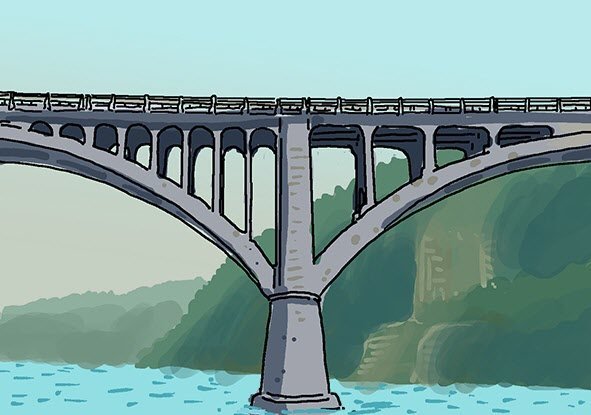The 70th anniversary of the Korean armistice agreement
The 70th anniversary of the Korean armistice agreement
Posted July. 25, 2023 08:02,
Updated July. 25, 2023 08:02

There is a bridge called Seungil Bridge in Cheorwon, Gangwon Province. Construction began in 1948 when it was located above the 38th parallel, which was North Korea. The Korean War began before the bridge was completed, halting the construction. After the war, the area became part of South Korea. The South Korean government finished the remaining work, and the bridge opened in December 1958. As a result, the bridge combines North Korean-style construction methods, which received technology from the Soviet Union, and South Korean-style construction methods. The name Seungil Bridge is a combination of Syngman Rhee's "Seung" and Kim Il Sung's "Il."
I had visited this bridge 20 years ago. I remembered learning in my old textbooks that during the Japanese occupation, the industry was heavily concentrated in the North. I wondered if the bridge reflected that gap. I'm not an engineer, and it's impossible to tell the difference in engineering technology with the naked eye. However, from the outside, the North Korean part of the bridge looked more unsophisticated and rougher. If you think about it, even during the Japanese occupation, although some special facilities were located in North Korea, such as the Nitrogen Fertilizer Factory in Heungnam, and the Sup'ung Dam, you can't judge the overall level of engineering based on that alone. Even then, Seoul was the center of the economy, culture, and education, and overall, South Korea had more historical and cultural depth than North Korea.
This is what I contemplated 20 years ago while standing on Seungil Bridge. Even if it might have been a subjective impression and perhaps a misjudgment from a professional standpoint, the disparity between North and South Korea has grown exponentially since then. Nonetheless, it's essential to acknowledge that North Korea is not devoid of progress in every aspect. We share a common heritage and historical roots, both embarking on the 20th century with comparable traditions and capabilities. It poses a significant threat with its formidable advancements in nuclear weapons, missiles, and rockets.
But on so many fronts, the gap between the two sides has widened significantly, and now we must worry about whether and how we will overcome these gaps, even if we are reunified. July 27 marks the 70th anniversary of the Korean armistice agreement. Questions and answers about reunification, division, and war come and go. Someone asks: What is the biggest obstacle to reunification? More concerning than the widening gap between North and South Korea is the sentimental and emotional approach. If reunification is the nation's absolute task, a cold and scientific approach is the only way.



![요양원 321곳 중 85곳 “치매발병후 기초수급자 전락 사례 있어”[히어로콘텐츠/헌트③-下]](https://dimg.donga.com/c/138/175/90/1/wps/NEWS/IMAGE/2025/12/16/132980397.1.jpg)



